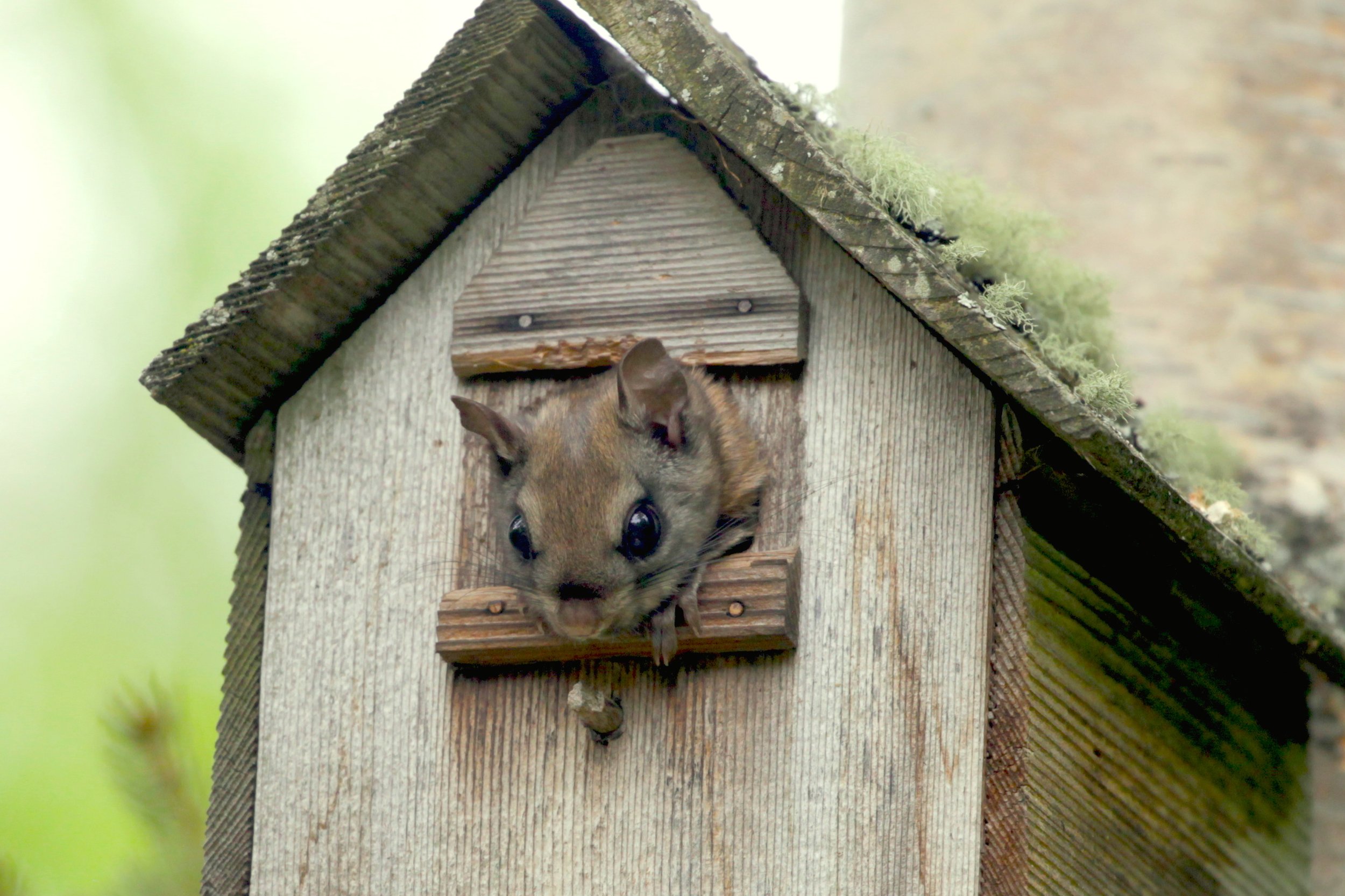Most of us are used to looking outside on a warm, sunny day and seeing birds darting from one tree to the next, with their familiar chirps ringing through the air. However, it’s likely that most of us have never seen a flying squirrel swooping past our window as we enjoy our morning coffee.
Photo: Larry Farley
How do they “fly”?
Unlike other mammals, northern flying squirrels have the unique ability to glide from tree to tree. This trait has many useful purposes, whether it be to escape from pursuing predators or to chase a fluttering insect. Flying squirrels can’t actually sustain flight in any way, but instead they have a distinctive membrane called a patagia between their front and back legs that catches the air as they jump, allowing them to sail long distances. They steer themselves with their front legs and tail, almost like an airplane. Impressively, most flying squirrels can travel from 50 to 100 meters in one glide.
Habitat Protection
Northern flying squirrels tend to build their nests in trees or stumps, specifically within coniferous forests that contain spruce and pine trees. Unfortunately, deforestation has led to habitat loss for many flying squirrel populations throughout North America. Consequently, the removal of trees limits their ability to travel long distances and their source of food and shelter. In general, the northern flying squirrel population is not at high risk of endangerment, but monitoring their population is still important.
Photo: Doug Sonerholm
The best thing we can do to ensure the flying squirrel population continues to thrive is by being environmentally conscious about forest management practices. Nesting boxes in forests can also be built to give them an alternative shelter to live and raise their brood in. In fact, northern flying squirrels have frequently been found in the nest boxes that EALT volunteers have put up for birds! Northern flying squirrels are beautiful creatures, and it’s important that they continue to thrive for many years to come.
Looking for more interesting facts? Subscribe to our Nature Notes newsletter for more blog posts. Thanks for reading!
Guest blog by EALT volunteer Laura S.



